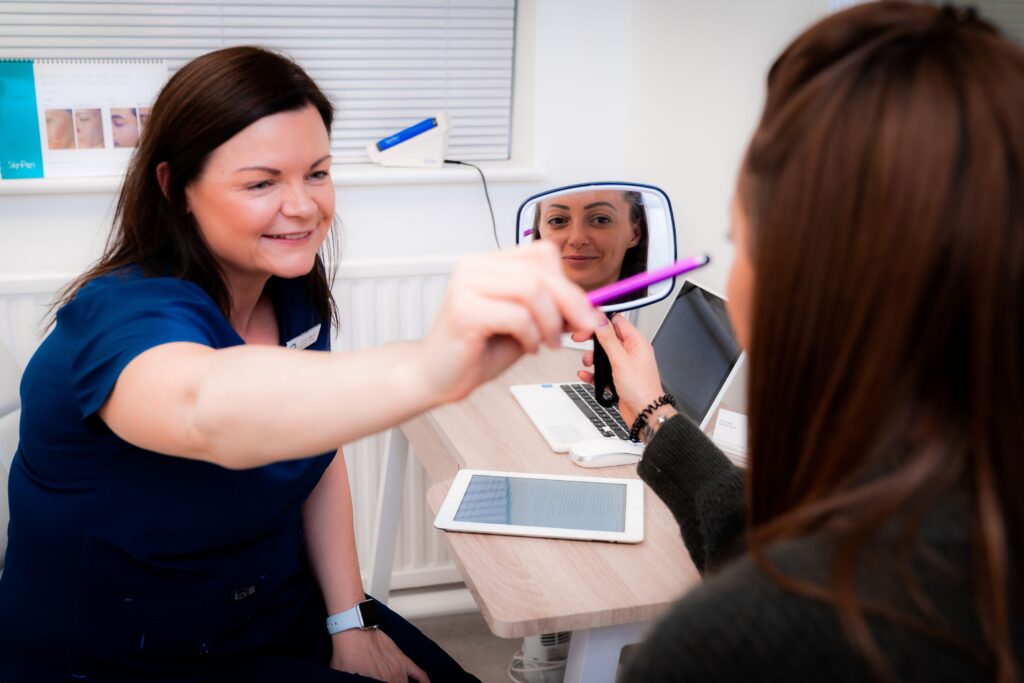Understanding facial aging is helpful when visiting an aesthetic doctor. One of the first things they’ll do is ask what’s bothering you about your face, often handing you a mirror. It’s important to reflect on this beforehand as different concerns trouble different people. Do you seek overall refreshment or do you have specific areas in mind? Your doctor will listen attentively, allowing you to articulate your concerns before offering their expertise.
Facial aging manifests in various ways, leading to the development of appearance concerns:
Wrinkles and deep lines
These develop over time due to the repetitive contraction of facial muscles during various expressions such as smiling, frowning, and squinting. Gradually, these dynamic lines can become static, remaining visible even when the face is at rest.
Pigmentation
Common pigmentation concerns include age spots, freckles, and sun damage, which often result from prolonged exposure to harmful UV rays. These can lead to uneven skin tone and texture, affecting the overall appearance of the skin.
Decreased Skin Elasticity
Collagen and elastin, essential proteins responsible for maintaining skin firmness and elasticity, diminish with age. As a result, the skin loses its ability to bounce back, leading to sagging and the formation of wrinkles and fine lines.
Shifting Fat Pads
As we age, fat pads in the face tend to redistribute and diminish, causing areas to lose volume and others to become more pronounced. This shifting can lead to hollows under the eyes, deep nasolabial folds, and a sunken appearance in the cheeks.
Bone Reabsorption
Bone density decreases with age, particularly around the eye sockets and jawline. This bone loss can contribute to changes in facial structure, including sunken cheeks, under-eye hollows, and a less defined jawline.
Drier, Rougher Skin Texture
With aging, the skin’s natural moisture barrier weakens, leading to increased dryness and roughness. This can result in a lackluster complexion, accentuating the appearance of fine lines and wrinkles.
The combination of these factors contributes to the typical signs of facial aging. While women may notice these changes around age 35, men often experience them starting around age 60.
Once you’ve identified your concerns, the next step is considering the extent of change you desire. Are you seeking a dramatic alteration or a subtle, gradual improvement? Nowadays, many prefer the latter to avoid obvious changes among friends and family, though some desire immediate results.
If only one aspect of your appearance troubles you, focus on that for greater satisfaction. Avoid getting caught up in the possibilities, especially in clinics with a commercial focus. Instead, discuss your concerns with your doctor to determine the best starting point and progression.
At Freyja Medical, we prioritise natural-looking results and take the time to listen to your goals. Book an aesthetic consultation with us today to explore how we can help you achieve your desired look with personalised care and expertise. With our emphasis on understanding facial aging, we ensure tailored solutions for your unique needs.

